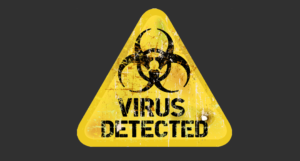Lessons from Ebola in the Age of Zika
Posted on | August 23, 2016 | Comments Off on Lessons from Ebola in the Age of Zika

Mike Magee
In the run up to the Olympics, and now as they have drawn to a close, Zika has been top medical news when it comes to exotic infectious diseases. It’s story has been so compelling that the mosquito borne disease has pushed Ebola to the sidelines – an epidemic which infected 28,616 Africans and cost 11,310 their lives between 2013 and 2016.
The WHO Ebola Response team, to their credit, has recently published their insights in the NEJM. Here are some of their findings:
“The largest numbers of cases and deaths occurred in Guinea, Liberia, and Sierra Leone, but an additional 36 cases were also reported from Italy, Mali, Nigeria, Senegal, Spain, the United Kingdom, and the United States.”
“Since 1976, and before the recent epidemic, there were 23 known Ebola outbreaks in equatorial Africa.”
The first case occurred in a 2 year old boy from a forested area of southeastern Guinea who died within 2 days on December 28, 2013. The causative agent was Zaire ebolavirus “probably acquired from an animal”. In March and April, the problem exploded with more than 100 regional cases. Thereafter, it spread primarily throughout three countries – Guinea, Liberia, and Sierra Leone.
Of the three, Sierra Leone had the slowest spread. Their epidemic affected 8706 and lasted 22 weeks – case load doubling every 5 weeks. In Liberia 3163 were infected over 15 weeks with case load doubling every 2.8 weeks. Finally, Guinea’s 3358 cases occurred in only 9 weeks long but it’s case load doubled every 1.9 weeks, over-whelming resources.
The study stated, “For Ebola, as for some other infectious diseases, roughly 20% of cases can be considered to be ‘superspreaders,’ being sources of infection for about 80% of cases in the following generation… For example, during an outbreak in the fishing community of Aberdeen in Freetown during January and February 2015, EVD was confirmed in 24 people, with infection apparently acquired from a single source.”
Other observations:
“It is conceivable, but has not been proved, that the more explosive spread of infection across Liberia, and within the capital of Monrovia, stimulated the development of more rapid and effective interventions than in Guinea and Sierra Leone”
“Admitting patients to Ebola treatment centers and shortening the delay before hospitalization could have played a large part in slowing the increase and accelerating the decline in case incidence.”
“ The epidemic took 10 months to reach peak incidence (September 2014), but cases were reported for an additional 18 months (until April 2016), and there may be more to come.”
“In the long tail of the epidemic, foci of transmission persisted for many months during 2015, particularly in areas of Sierra Leone and Guinea where symptomatic patients were unwilling to seek medical care, where contacts of patients fled quarantine, and where deaths from EVD (epidemic viral disease) were followed by unsafe burials”
And finally, this lasting truth about infectious diseases and vulnerable populations:
“The critical question now is how to ensure that populations and their health services are ready for the next EVD outbreak, wherever it may occur. Health security across Africa and beyond depends on the resources made available both to strengthen national health services and to sustain investment in the next generation of technologies for Ebola control.”
Tags: CDC > developing nations > Ebola > epidemics > EVD > WHO > Zika


